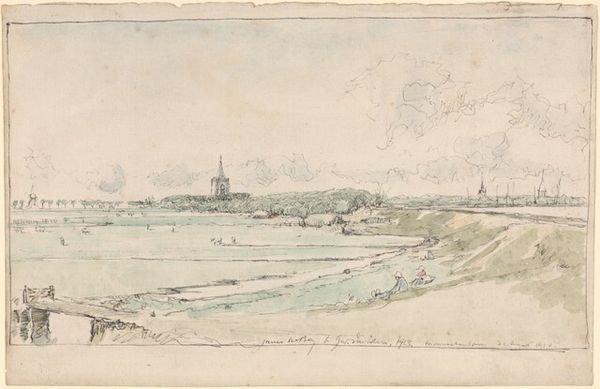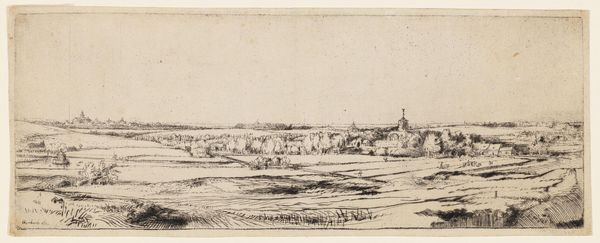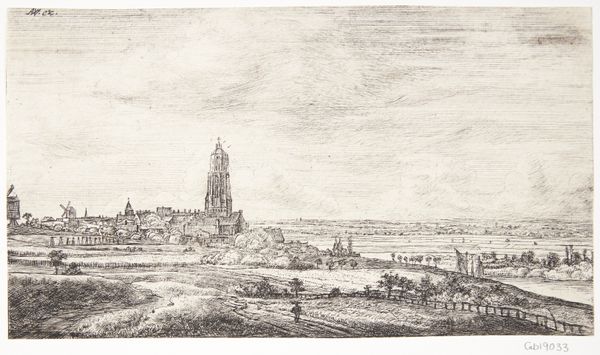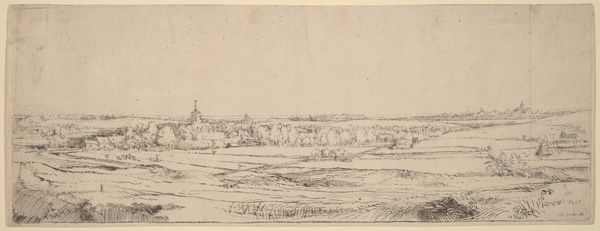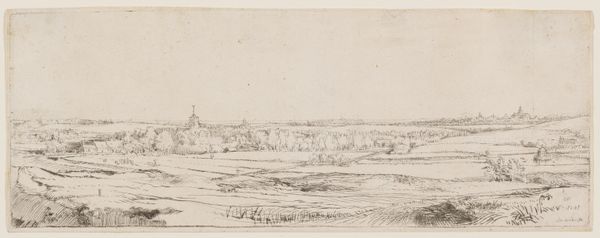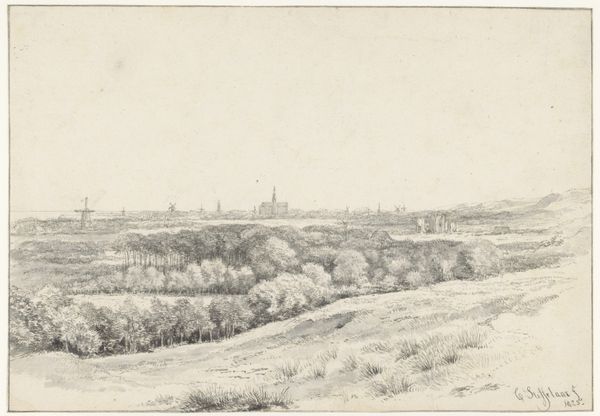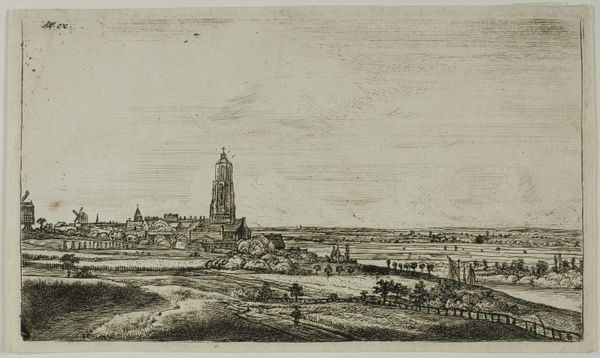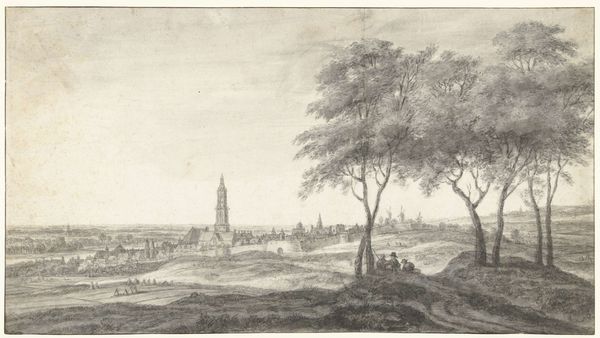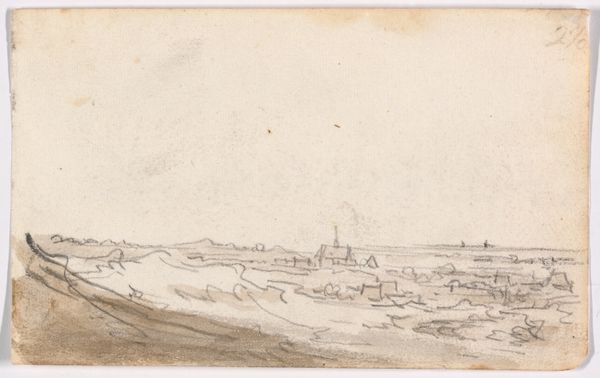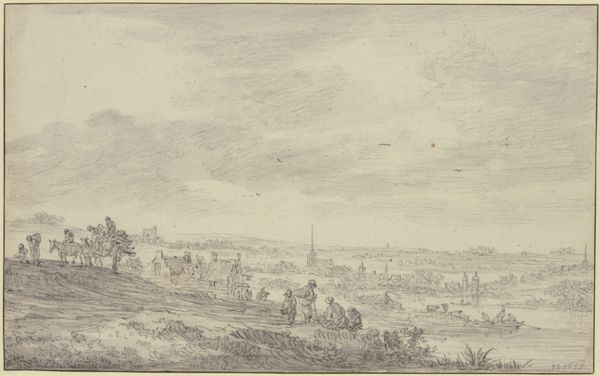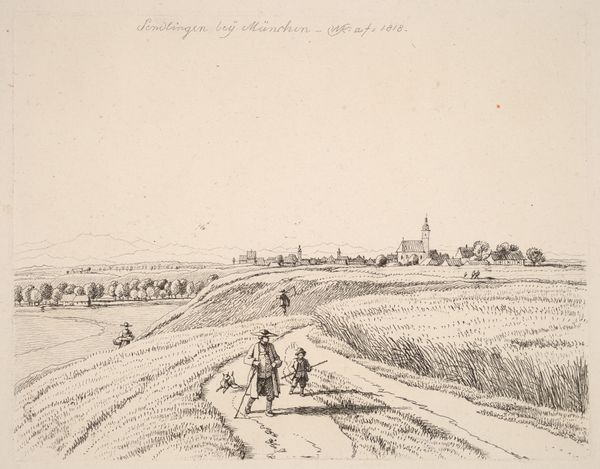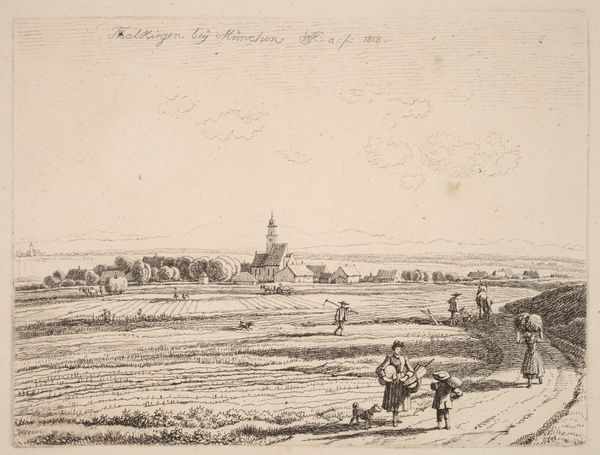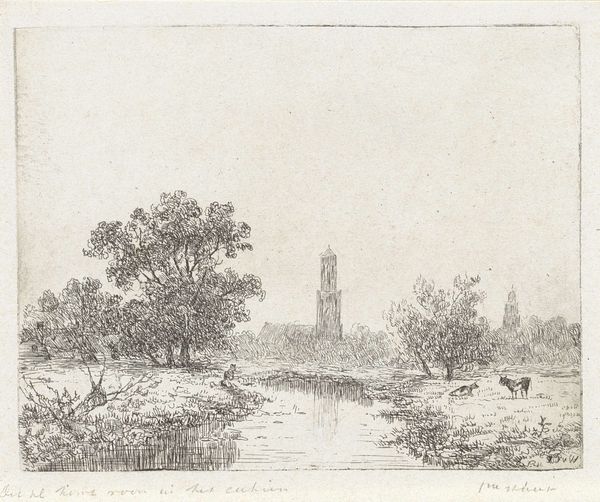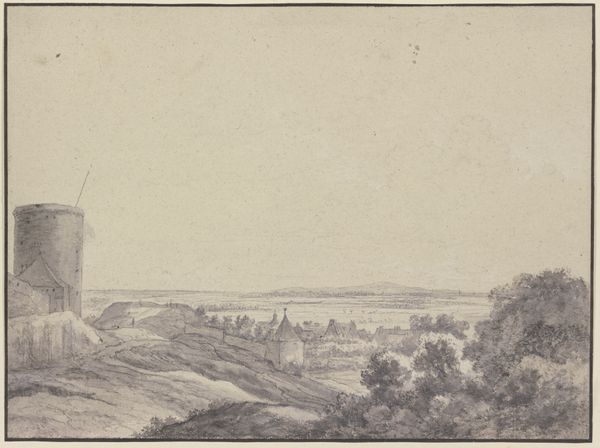
drawing, watercolor
#
drawing
#
dutch-golden-age
#
landscape
#
watercolor
#
coloured pencil
#
cityscape
Dimensions: height 104 mm, width 239 mm
Copyright: Rijks Museum: Open Domain
Editor: We’re looking at Gerbrand van den Eeckhout's "View of Rhenen and the Rhine from the East," created in 1663 using watercolor and drawing techniques. It’s striking how the artist captures this vast landscape with such delicate lines and muted colors. What do you see in this piece that I might be missing? Curator: The interplay of line and wash immediately draws my attention. Notice how the artist utilizes thin, almost transparent washes of watercolor to delineate the distance, contrasting with the more defined pencil work in the foreground fields. It’s a study in perspective achieved through both tonal variation and textural contrast. Editor: I see what you mean about the texture. Does the tower’s verticality play a role in the composition? Curator: Undoubtedly. The tower serves as a central vertical element, disrupting the horizontal flow of the landscape. This not only draws the eye upward, establishing a sense of depth, but also anchors the cityscape within the broader composition. The fence-like lines in the fields lead our gaze towards that central object as well. Editor: So, it’s not just a representation of Rhenen, but a carefully constructed arrangement of visual elements? Curator: Precisely. Consider how the meandering river and the subtly modulated sky further contribute to the overall structural balance. The light, almost ethereal quality of the washes creates a sense of atmosphere, a crucial element that softens the potentially rigid geometry of the landscape. Notice, however, how each stroke retains its identity, avoiding total blending; the material properties thus enhance the form. Editor: That's fascinating. I never thought about it that way. I always saw it as a nice picture of a city, but now it is clearly more complex. Curator: Yes, precisely, the composition is anything but accidental! Every compositional aspect directs the observer’s experience and interpretation of the space.
Comments
No comments
Be the first to comment and join the conversation on the ultimate creative platform.
